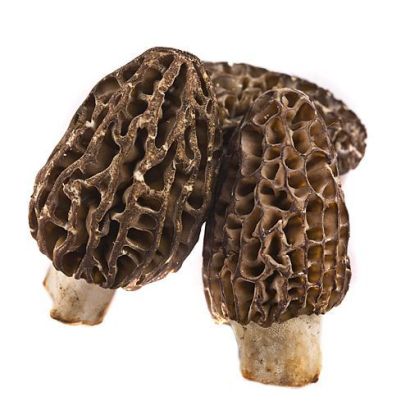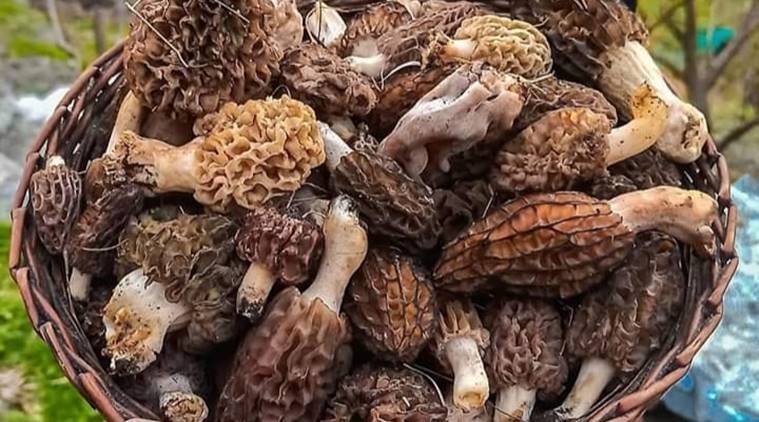Health Benefits of Morel Mushrooms: Potential Anti-Cancer & Immune-Boosting Properties
The fascinating world of morels – the prized, gourmet mushrooms that have captivated food lovers and foragers alike. In this guide, we’ll be delving into the history and culture of morels, exploring the various species and their unique characteristics, discussing the best ways to find and harvest them, and offering tips on how to prepare and cook these delectable fungi. We aim to provide you with the most comprehensive and informative guide on morels available online and to help you become a true connoisseur of this culinary delicacy.

History and Culture of Morels
Morels have a long and storied history, dating back centuries to when they were first discovered growing in the forests of Europe and Asia. These fungi were prized for their unique flavor and texture and were considered a luxury food item reserved for the wealthy and elite. Over time, morels became more widely available, and their popularity spread throughout Europe and eventually to other parts of the world.
In the United States, morels are particularly prized by foragers and foodies alike, with many annual festivals and events celebrating the arrival of morel season. These mushrooms are considered one of the most sought-after wild foods and are often featured in high-end restaurants and gourmet recipes.
Species and Characteristics of Morels
There are several different species of morels, each with its own unique characteristics and growing habits. The most common species found in North America are the yellow morel (Morchella esculenta), the black morel (Morchella elata), and the half-free morel (Morchella semilibera).
Yellow Morels are easily recognized by their honeycomb-like cap and hollow stem. They have a rich, earthy flavor and are often used in soups, sauces, and stews.
Black Morels are similar in appearance to yellow morels but have darker, almost black caps. They are slightly more robust in flavor and are often used in more hearty dishes like risotto and pasta dishes.
Half-free Morels have a distinct cap that is only partially attached to the stem, giving them a unique appearance. They have a delicate, nutty flavor and are often used in light, vegetable-based dishes.
Finding and Harvesting Morels
Morels are typically found in wooded areas in the early spring, usually around April or May. They prefer moist, shady areas with a mix of hardwood and coniferous trees. To find morels, it’s best to look for areas with rich, loamy soil and a good mix of deciduous and coniferous trees. It’s important to respect the environment when harvesting morels and only take what you need.
When harvesting morels, it’s important to cut the stem at ground level and avoid pulling the mushroom out of the ground, as this can damage the delicate root system and prevent future growth. It’s also important to clean the morels thoroughly before cooking, as they can be quite dirty and may contain insects or other debris.

Here are some of the potential health benefits of morel mushrooms:
- Rich in nutrients: Morel mushrooms are a good source of several essential nutrients, including protein, fiber, potassium, magnesium, and vitamins B2 and B3.
- Anti-inflammatory properties: Morel mushrooms contain compounds that have been shown to have anti-inflammatory properties. This makes them potentially beneficial for reducing inflammation in the body, which is associated with a range of chronic health conditions.
- Antioxidant effects: Morel mushrooms are also rich in antioxidants, which can help to protect the body against oxidative stress and damage caused by free radicals.
- Potential anti-cancer properties: Some studies have suggested that morel mushrooms may have anti-cancer properties, thanks to their high levels of beta-glucans and other bioactive compounds.
- May boost immune function: Morel mushrooms contain polysaccharides and other compounds that may help to stimulate the immune system, potentially boosting its ability to fight off infections and other health threats.
Preparing and Cooking Morels
There are countless ways to prepare and cook morels, from simple sautés to complex sauces and soups. One popular method is to simply sauté them in butter with garlic and shallots, and serve them as a side dish or as a topping for steak or poultry. Morels also pair well with pasta dishes and can be used to add depth and complexity to soups and stews.
When cooking morels, it’s important to use a light touch and let the mushrooms speak for themselves. They have a delicate, nutty flavor that can be easily overwhelmed by heavy spices or sauces. It’s also important to cook them thoroughly, as raw morels can cause gastrointestinal upset in some people.
Overall, morel mushrooms are a nutritious and potentially beneficial addition to a healthy diet. However, as with any new food, it’s important to talk to your healthcare provider before making any major changes to your diet or lifestyle.